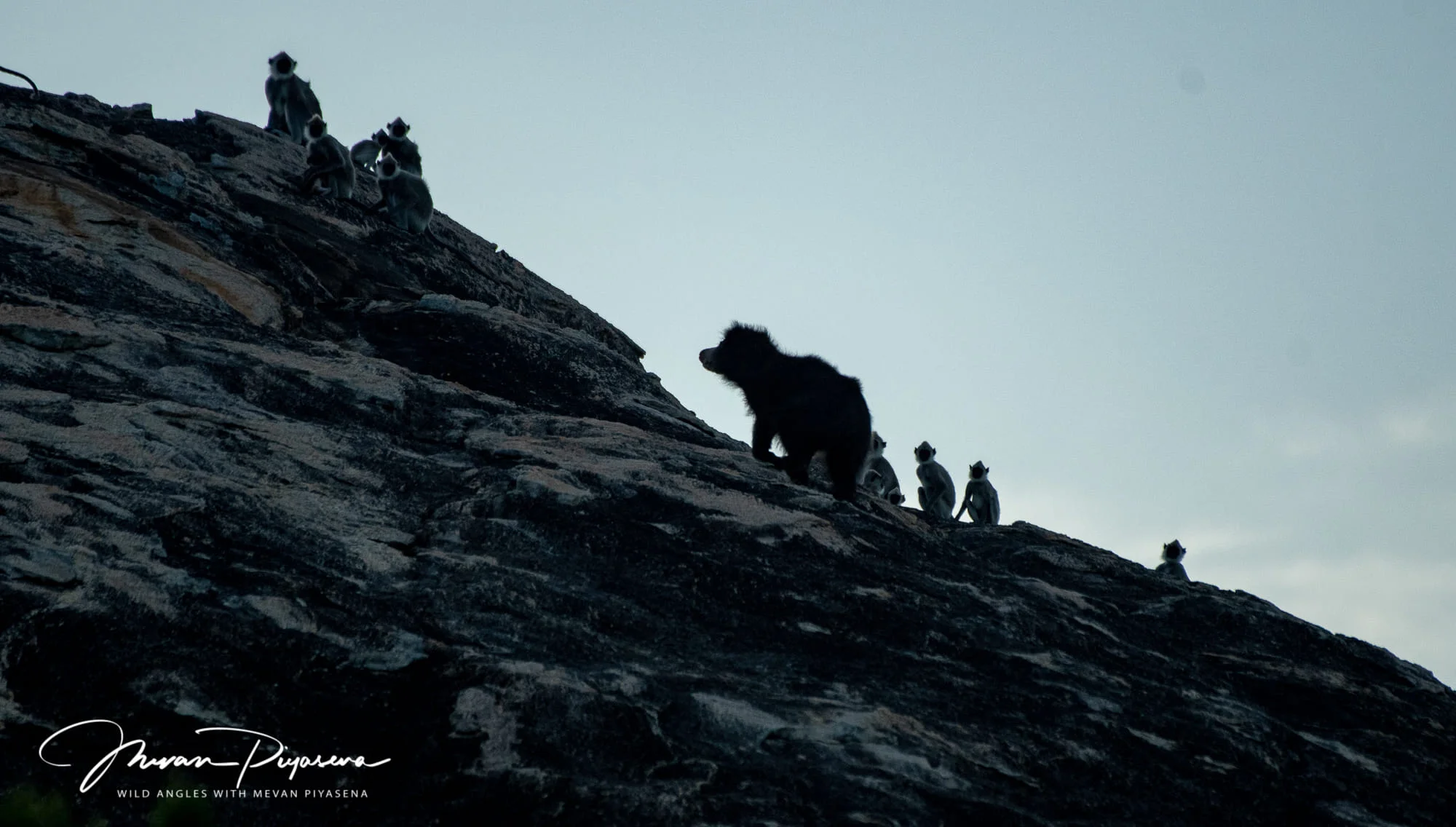Yala National Park
Forests fringing on pristine coastline; brackish and freshwater pools teeming with an array of water fowl; tuskers wading in the water holes while herds of elephants browse on the riverbanks; sloth bears; buffalo; and perhaps the most charismatic of all Sri Lanka’s wildlife: leopards. All this and so much more make Yala the most-visited national park on the island, and a site of frequent wilderness adventure.
Designated a wildlife sanctuary in 1900, Yala is known sometimes as Ruhuna National Park, and is split into five blocks, of which only two are open to the public. As it lies in the southeast corner of the island, Yala primarily receives its rainfall during the northeast monsoon, which generally runs through October and November. These downpours help fill the ancient man-made reservoirs inside the park, which sustain wildlife through the dry months through the middle of the year.
Despite the occasional torrential downpour, Yala’s is a semi-arid climate, its vegetation adapted to survive through extended rainless periods. Such is the diversity of Yala’s landscape, however, that despite this, there are parts of the park that are wetland environments. Rocky granite outcrops, golden sandy beaches, lagoons of brackish water, a plethora of low-lying mud pools – all of these help make Yala home to substantial biological diversity. Forty-four mammal species have been described in Yala, while 215 bird species have also been recorded there, six of those being endemic species.
The second-largest national park in Sri Lanka (after Wilpattu, which was also made a wildlife sanctuary in 1900), Yala is beloved for not only the frequent sightings of charismatic wildlife, but also the breathtaking beauty of its landscape – the Indian Ocean sometimes in the background of pools containing crocodiles, wading birds, herbivores and at times, even the rarer and more wondrous species.

Yala: Leopard heaven
Although leopards are the most widespread big cat species on the planet, they are also globally reputed to be the most elusive. Partly this is because many of the world’s leopards live in ecosystems dominated by more fearsome carnivores. Their place in the predator hierarchy often forces leopards to employ secretive behaviours – disappearing quickly into rocky dens, or up thick-canopied trees, for fear of being bullied by lions (in Africa) or tigers (in Asia), to name just two.
In Sri Lanka, however, where they are the apex predator, leopards have been observed to be bolder, more carefree, and less wary of humans. There is, in addition, no wilderness in the world where leopards are found in such a high concentrations as in Yala. All of this makes the park perhaps the best place in the world for leopard sightings.
Despite their relative observability, records and identification data on Yala’s leopards had been scant, and their ranging behaviours were also not well understood. That is until a group of young wildlife enthusiasts took it upon themselves to conduct a more detailed study of the leopards in Yala’s Block 1.The Yala Leopard Center (YLC) in 2021, co-founded by Mevan, together with Yala Leopard diary (https://yalaleoparddiary.com ) revealed more than 100 leopards resided in Block 1. More fascinating was the data recorded on coalitions among male leopards. Where globally it is understood that male leopards are solitary, and as such, zealously guard their home territory against all other male challengers, Yala’s male leopards were at times not only recorded to have shared territories, but also kills.
Sharing kill
Lucas and Michael..
In April 2019 I Observed 2 leopards( not siblings) YM16 Lucas and YM27 Michael holding on to a deer on kill in a area called Diganwala. The deer was still alive when lucas was trying to kill it while biting its neck whilst Michael was feeding on the deer when it was still alive,
Lucas and Michael are both grown males who have separated just from the respective mothers and shares the same home range. Seen sharing a kill without any aggression towards each other is rare observation.(Mevan Piyasena)
The study’s efforts to give each cat a code (e.g. YM-16 or YF-34 – the Y standing for Yala, and the M or F denoting sex) have allowed the tracking of Yala’s leopards, which as it turns out, have substantially different behaviours and movement patterns from leopards in other parts of the world. The information gathered by YLD is substantiated by photographic evidence, and information about the documented leopards’ family ties and movement patterns are made publicly available through the Leopard Centre.
In this book, we have featured XX existing leopards. There are also photographs of many other cats, who have not been recently sighted.
Sloth Bears
Although many sloth bears are understood to reside in Yala, they are largely spotted after rains, which dampen the top surface of the soil. This is because the rain softens termite mounds, which bears like to tear down to prey on the insects within.
During May and June, Yala’s many palu trees (manilkarahexandra) also begin to bear fruit, and bears are seen climbing these trees to relish the fruit. These months are probably the best time to spot these bears, which are otherwise even more elusive than Yala’s leopards.
Other mammals often spotted at Yala include spotted deer and sambar deer, wild boar and buffalo. Ornithologists are also treated to an array of bird life, particularly between December and March, when the migratory species winter in the southeast of Sri Lanka.






